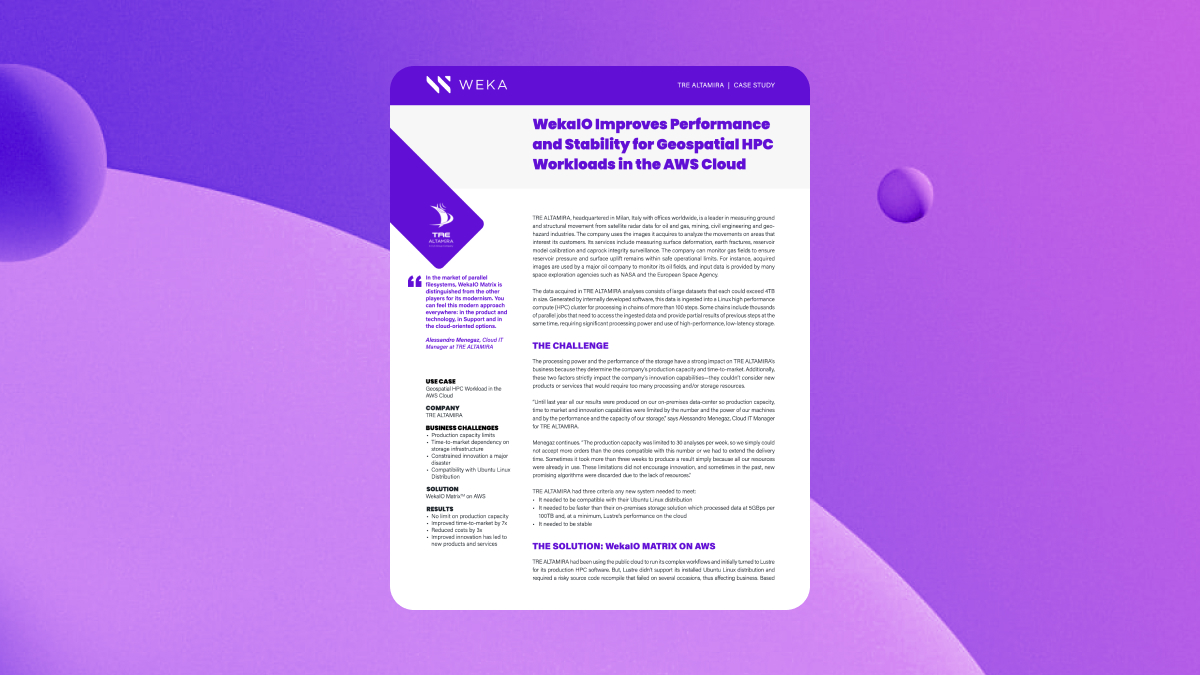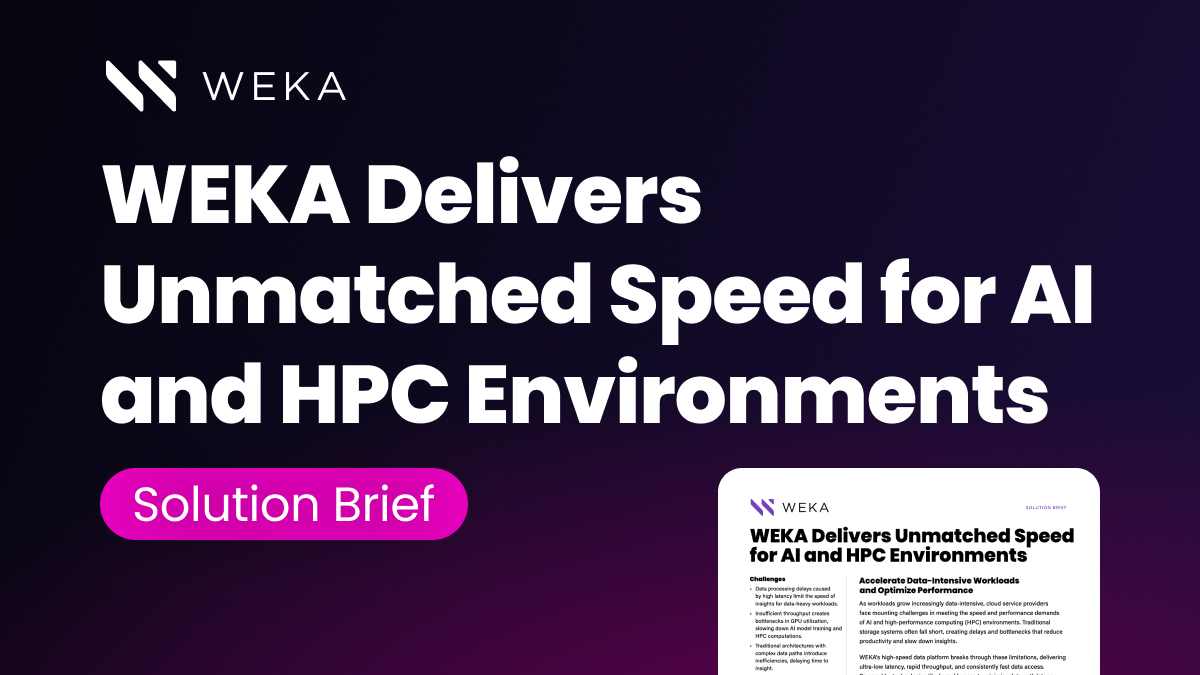Modern Data Architecture [Essentials & Best Practices]

Wondering about modern data architecture? We explain how to build systems that scale to meet business needs and can handle today’s data-intensive applications.
What is modern data architecture?
Data architecture is the structure of a system’s data assets and data management resources. Modern data architecture is designed proactively with scalability and flexibility in mind, anticipating complex data needs.
The Evolution of Data Architecture
Data architecture is the structure of your data assets, both logical and physical, developed with a vision of how those assets and your information systems will inevitably interact with one another. This includes planning how data in a system will be created, processed, stored, and transmitted.
This simple definition takes on new complexity when we think about what constitutes data storage and management in enterprise and high-performance computing scenarios. These scenarios, however complex, can be broken down into three architectural processes that speak to every facet of the architecture:
- Conceptual, including business entities and operations
- Physical, including hardware and mechanisms used for moving, storing, and processing data
- Logical, including how different types of data relate to one another
With that in mind, there are some simple principles to data architecture that define what it means to lay out business and technical goals into a data architecture framework:
- Data is shared between users and processes. The reason to have data is to use it, either to inform decision making, build insights, or develop more complex computational processes. Data silos can be the death of an efficient business, and modern architecture must eliminate these silos.
- Users and processes must access data. Modern data architecture must contend with ways to maximize access and performance, which includes high-throughput access channels and comprehensive human interfaces and dashboards.
- Infrastructure should be agile, flexible, and resilient. Inflexible infrastructure doesn’t just limit how effectively a company works–it also limits how resilient that company is in the face of emergencies. With the right mix of responsiveness and scalability, data architecture can make computational and organizational work more efficient while preparing your enterprise against potential setbacks.
- Curation and security are critical. For many organizations, compliance is a checklist. But modern data architectures force IT and business leaders to implement data curation, compliance, and management as key aspects of their businesses and hybrid cloud strategies.
These principles are not new. Many aspects of our understanding of modern data architecture stem from brilliant insights from engineers and scientists from decades ago. As far back as 1970, Edgar F. Codd published a paper on relational modeling to streamline data access for Cobol programs, which led to the creation of SQL and structured data architecture as a discipline.
Peter Chen developed entity/relationship modeling in 1976 to help streamline database access, including the invention of data buffers.
Over time, data architecture has undergone several paradigm shifts related to new technologies and business demands. Modern data architecture as we know it has been significantly impacted by the concurrent evolution of big data, machine learning/AI, and cloud computing platforms.
Components and Characteristics of Modern Data Architecture
It wasn’t the case that these new technologies suddenly changed how we think about data architecture as a whole. They have, however, pushed the limits of how we conceptualize data management and infrastructure.
With that in mind, there are several key components that any data architectures must implement:
- Infrastructure- and data-agnostic architecture: Data architecture can and should provide a way to manage data no matter what that data is and across multiple platforms or infrastructures at the same time. This includes building high-performance computing on-prem with the potential for cloud migration or hybrid cloud architectures or platforms.
- Parallel, Distributed Processing: High-performance computing calls for high-performance throughput of data. Modern workloads in life sciences, genomic sequencing, data modeling, or artificial intelligence/machine learning demand a lot of data and a fast, reliable way to access and process it. Modern architectures must implement fast technologies to support parallel processing across the infrastructure.
- Scalability: Maybe the most important component here, scalability is a direct response to the limitations of a traditional systems approach to data architecture constructs like data lakes, data stores, and databases. New configurations with fast and accessible cloud environments and on-prem private clouds are pushing the demand for ever-increasing data storage and workloads for machine learning and life science applications.
- Open Data Access: Outside of compliance and security demands, it should be relatively easy for employees, researchers, and engineers to access critical data regularly without wrestling with role ownership.
Additionally, there are several characteristics of data architectures that exist because of these components.
Characteristics of modern data architectures include:
- Automation: Modern architectures are too vast for a hands-on approach to direct management. Automation in areas like data structuring, data relational schemas, predictive analytics, and so on requires automation to maintain system integrity at scale.
- High-Performance: Among parallel processing, optimized NVMe-native connections, and wide-spread public or private clouds, a data architecture must never sacrifice performance.
- Elasticity: Scalability is one thing. Modern data architecture, however, calls for the ability to scale on-demand or even to roll back resources when needed. For example, managing high-performance machine learning workloads can mean expanding computational resources rapidly to meet short-term demand. System elasticity means that, depending on your compute and storage needs, you should be able to scale or shrink based on your needs and not on the limitations of the architecture.
- Intelligence: Along with automation, intelligent systems driven by AI and machine learning are quickly becoming the backbone of modern data architectures. AI can help operators make decisions with real-time insights and digital twin models as well as empower more effective, optimized automation.
- Governed: This characteristic is as technical as the others, but it is still important. Data architectures call for well-conceived and planned data governance that covers how data is accessed for what purposes and by whom.
- Unified: Your employees and engineers should be able to access data no matter the platform or system it is on and do so the same way no matter where they are.
What Are the Challenges and Benefits of Building Modern Data Architecture?
As with any massive technologic undertaking, there will always be costs and benefits.
As we’ve discussed the characteristics of modern cloud architecture, it seems like the benefits would be apparent. They are:
- Flexible and scalable infrastructures that don’t rely on specific platforms, environments, or data types.
- Intelligent processing environments are driven by big data storage, machine learning and AI to drive innovation and operability across the entire system.
- High-performance systems using modern processing methods to power critical, data-intensive workloads in life sciences, machine learning, AI and data analytics.
- Resilient infrastructure that supports secure and accessible backups, elastic scaling and responsive systems that can incorporate or release different platforms at will.
- Storage of massive volumes of data without restricting the ability to do work with that data.
- Built-in analytics and visualization on your data, including how it travels through your systems, how it is used and where there are any bottlenecks.
There are also challenges associated with modern data architecture, including:
- Developing a real data methodology: The truth is that even the most innovative tech will not replace sound and well-planned data strategies. It’s up to your IT leadership to understand the demands of your business and data needs and how to approach structuring data and technology in meaningful ways.
- Developing a business plan for your data: Outside of your technology, it’s equally important to have business leaders who are part of an innovative culture of modernization and innovation. It can be a challenge to align tech and business goals without having the best minds in your organization working together to do so.
- Complexity: A modern data architecture can make access and workloads easy with unified interfaces. That doesn’t mean that the underlying architecture isn’t complex, however. It will be a challenge to deal with that complexity in a way that encourages organizational leaders and technology partners to work together to build.
- Maintaining data quality: Even the most amazing architecture and systems are only as good as their data, and if you don’t have plans and processes in place to determine the quality of incoming and outgoing data (and the wherewithal to automate data assurance and integrity) then you’re just going to deal with substandard results.
Building Modern Data Architecture with WEKA
WEKA provides the foundation for a streamlined and affordable data infrastructure that prioritizes performance, scalability and intelligent operations. With WEKA, you enjoy a unified system that is optimized for NVMe low-latency, high-performance computing for critical workloads in genomics, machine learning and big data analysis. In fact, WEKA is the world’s fastest shared file system and supports bare-metal, virtual and cloud (on-prem, public and hybrid cloud storage) environments.* It also supports almost any data platform or protocol either natively (POSIX, NFS, S3, SMB) or through POSIX node connections (HDFS).
If you are interested in WEKA as the scalable, performance-focused architecture for your intensive computing workloads and data storage needs, Contact Us to learn more.





